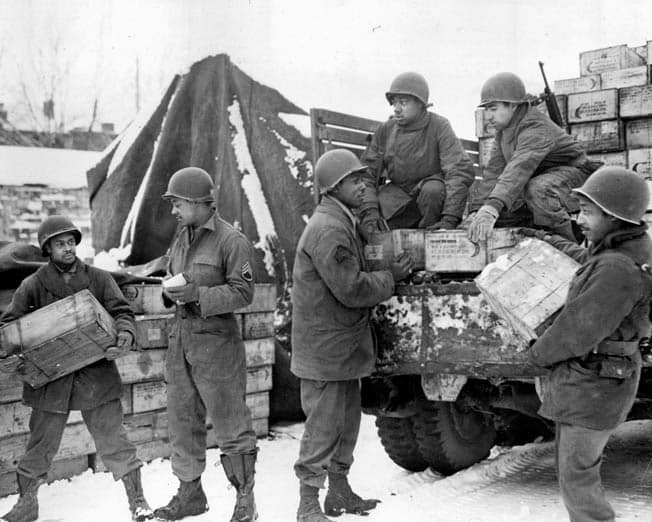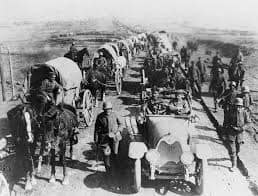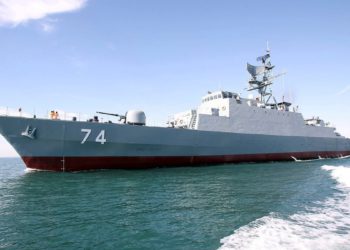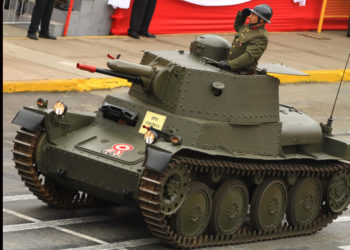Sustainment Operations: An Overview at the Tactical Level

In part 1, we outlined from Macro to Micro, how Sustainment Operations work. The news and social media are filled with newly created fanfare for “logistics” but much of this is merely and simply reciting the buzz word itself after listening to press briefs by Defense Officials.
This article is a quick breakdown and overview on how logistics work at the Brigade or equivalent level.
Logistics at the Brigade Level

At the Brigade and below level, logistics is a tough endeavor. The Brigade or equivalent level has a dedicated supply cell assigned to the unit commander who is responsible for the logistical planning, resupply efforts, and the forecasting of all required supplies. They also work with the maintenance and repair sections as well. That’s quite an endeavor!
We will start with a fully equipped Brigade [or equivalent] that is about to execute operations.
At this time, the parent organization and all the subordinate units will need to forecast what supplies are expected to be consumed over the next 72 hours, with subdivisions of this, every 24 hours.
Each subordinate Battalion or equivalent, also has a supply cell, which will also forecast consumables over the next 72 hours, subdivided, every 24 hours. The same goes for their subordinate echelons.
The Forecasting Process

For example, say a tank brigade will attack West and then proceed to another subsequent attack position and await conditions to be set before proceeding to their next phase of their mission. The supply cell must know exactly the amount of fuel consumed, how many rounds fired for each single weapon system, and how much water, food, medical supplies have been used, as well as damages and casualties sustained, in order to forecast the correct amount to resupply. Add to this that they cannot get it wrong! Even a small to modest error can have serious consequences as a few hundred gallons of fuel off, per unit, or a few rounds off per unit[s] can mean vehicles run out of fuel and/or ammo… sound familiar?
At this stage, the onset, a good Supply Operations Officer will have a solid understanding of the mission[s], of each phase, sub phase, and know WHERE to anticipate requesting resupply. Usually, after an anticipated engagement and during reconsolidation phase, as one should not endeavor to resupply while a unit is in contact or engaged in heavy combat. By syncing the resupply plan with the maneuver plan [with the unit commander’s approval], logistics become slightly less complex and complicated, if one is off or over optimal, delays can and often do occur, sound familiar?
Further, each sub unit here, will also be required to submit a daily supply log of all used supplies, damages to equipment, casualties, and parts needed. Sometimes, this is twice daily, sometimes only once.
Challenges in Reporting and Maintenance
In order to do this thoroughly, each individual and each of the smallest unit of action, who are quite busy fighting, must take time to take stock of what they used and what they need. They must also conduct daily maintenance of their vehicles and weapons, annotating the status, respectively. Most importantly, is accurate reporting. Even something as simple as how a vehicle is positioned [canted] can throw off a fuel gauge reading.
Everything above is not easily taught, learned, nor easily done, and this “science” requires great training and discipline to do repetitively. These issues are further compounded when an Army is comprised of conscripted or contract-based personnel and not used to constant, large-scale combat operations or constant simulated combat training operations for durations lasting more than a few weeks. In other words, constant disciplined training is critical to the profession of arms and specifically, sustainment operations.
Once each team, section, squad, platoon, company, and battalion sends up their reports of usage and remaining content, the brigade must consolidate the information and submit it to their parent organization and combat logistics support unit, who then repeats the process. Concurrently, the Brigade prioritizes based upon the maneuver commander’s plan.
Coordination and Competition for Supplies
At times, respective Battalion or Company Commanders will compete for needed items; a common occurrence, as they have their own worries too and also their own mission. This leads us to the first 24 hours.
What about the next few days?
Resupply is not a constant occurrence either. As a unit conducts operations, their line of resupply and communication grows. These need to be secured and safe for resupply and recovery operations to even be feasible.
In addition to resupply, Logistical Operation Officers must establish and coordinate resupply routes, locations as well often work with the maintenance and repair elements to establish repair points, casualty collection points, routes to use as well. These too must be coordinated as roads are a premium.
Units must know where to take their wounded, damaged equipment, where they need to be towed to in order to get fixed and/or recovered, if at all possible. There are several factors to also plan and consider for each one. The basic premises of them are that they cannot be within view or range of enemy forces observation or their weapon systems, thus they risk becoming destroyed themselves.
The Logistical Report and Alignment
Once all the data is rolled up into a logistical report, it is then submitted for record and processing. The Brigade must then plan for each resupply “push” to be aligned with the conditions on the front, where then each Battalion must send their own resupply elements out to obtain said resupplies and then redistribute them to their subordinates units via their Distribution Platoons. These efforts are undertaken constantly.
For the next part in this series, we will focus on the Battalion and Company level approach to logistics, how resupply actually works, who does what, what considerations must be accounted for, etc. This part is where it matters most.
– Mel Daniels









